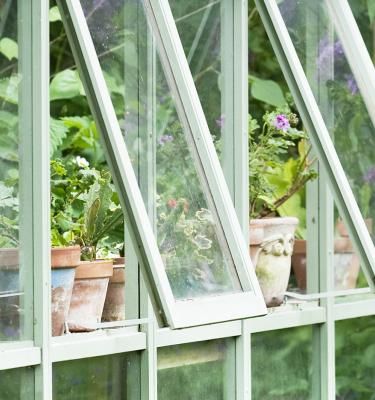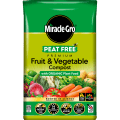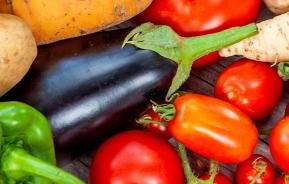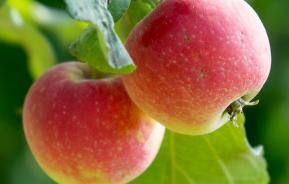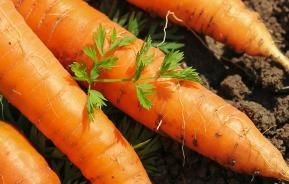The main factors are the temperature and the lighting, using a heater in winter, thermometer and LED lighting, which can encourage healthier growth to bring the best out of the shape, size and taste of your vegetables. With enough practice and dedication, it is possible to achieve some astounding results!
Getting the conditions in your greenhouse right is of paramount importance. The reason for this is that getting the conditions wrong could ruin your crop, and it is quite easy to get the environment wrong in a greenhouse setting. There are 3 factors that need to be considered in order to get your conditions perfect for all types of growing.
Greenhouse temperatures
The temperature in the UK varies a great deal through the seasons, which can make it extremely difficult to control the temperature within the greenhouse. As a result, you need to have a combination of heating, ventilation and cooling fans installed for the optimum environment for growth all year round.
In the winter and early spring months, it's likely you will need to use auxiliary heat to regulate the temperature for summer vegetables like tomatoes. UK winter temperatures can be between -10°C to 15°C (14°F to 60°F), the lower end of which can be very damaging.
During the summer months, the temperature can usually vary between 13°C to 32°C (55°F to 90°F). At this time of year, you will need a combination of ventilation to ensure the correct amount of airflow is getting to the plants, which is vital for healthy growth, and cooling fans as it is extremely difficult to keep the temperature down on a hot, sunny day. Ventilation can vary in expense depending on whether or not you would like an automated ventilation system, which is far easier and more convenient. Adversely, you can easily get a manual-operated vent, but they do need regular checking - usually at least twice a day.
Here is a useful guide to the temperatures (degrees) that your plants need for optimum growth:
Cool season crops
| Vegetable | Germination temperature | ||
|---|---|---|---|
| Minimum | Optimum | Maximum | |
| Beets | 4°C | 27°C | 32°C |
| Broccoli | 4°C | 27°C | 32°C |
| Cabbage | 4°C | 27°C | 32°C |
| Carrots | 4°C | 27°C | 32°C |
| Cauliflower | 4°C | 27°C | 32°C |
| Kohlrabi | 4°C | 27°C | 32°C |
| Leeks | 4°C | 27°C | 32°C |
| Lettuce (leaf types) | 2°C | 21°C | 21°C |
| Onions (green) | 2°C | 27°C | 32°C |
| Onions (dry, seed) | 2°C | 27°C | 32°C |
| Parsnips | 2°C | 21°C | 32°C |
| Peas | 4°C | 21°C | 27°C |
| Potatoes | 7°C | 7°C | 7°C |
| Radish | 4°C | 27°C | 32°C |
| Spinach | 4°C | 21°C | 21°C |
| Swiss Chard | 4°C | 29°C | 35°C |
| Turnips | 4°C | 27°C | 38°C |
Warm season crops
| Vegetable | Germination temperature | ||
|---|---|---|---|
| Minimum | Optimum | Maximum | |
| Beans | 10°C | 27°C | 32°C |
| Cantaloupe | 16°C | 32°C | 38°C |
| Corn | 10°C | 27°C | 38°C |
| Cucumbers | 16°C | 32°C | 38°C |
| Eggplant | 16°C | 27°C | 32°C |
| Pepper | 16°C | 27°C | 32°C |
| Tomato | 10°C | 27°C | 38°C |
| Squash (Summer) | 16°C | 32°C | 38°C |
| Squash (Winter) | 16°C | 32°C | 38°C |
| Watermelons | 16°C | 32°C | 43°C |
Greenhouse watering and irrigation
Regular, correct and adequate watering during spring and especially summer is essential. Although installed watering and irrigation systems are the easiest and most convenient way to water, if you have a watering can, the time and a lot of enthusiasm then this is perfectly fine! If you are starting out with your greenhouse, it is unlikely you'll invest in an electronic irrigation system as they can be rather expensive. But there are numerous simple drip, siphon, or capillary matting systems that are easy to install and use. Or attach a simple electronic timer to your tap to automate your watering via a hosepipe - especially useful when you're away from home for extended periods.
Greenhouse lighting
Like many things, plants can have either too much or too little of the light. In order to get the balance right, it is necessary to use a combination of fluorescent light and special shade panels to ensure that the optimum amount of light is reaching your crop. As you probably know, the process of photosynthesis is how plants feed, which lighting plays an integral part in.
You can get lights that mimic sunlight for summer-specific vegetables like tomatoes and squash, and if you are looking to take your greenhouse gardening seriously you can set up HID (High-Intensity Discharge) lights with these bulbs in.
Top vegetables to grow in a greenhouse
Leafy greens
Leafy greens are the family which includes lettuce and is amongst the easiest of vegetables to grow. It is a recommended vegetable for beginners to greenhouse gardening as all leafy greens grow in relatively the same way. These are also known as the ‘salad family’ which makes sense as they go well in all salads and sides.
Tomatoes
A greenhouse favourite as they are fairly easy to handle. They are a warm-season crop that can vary greatly in colour and size. We recommend that beginners give growing these a try, they take around 65 days to harvest.
Cucumbers
This is a slightly more complex vegetable to grow, despite being one of the more popular vegetables in a salad. In order to retain the freshness of the cucumber after harvesting, you must wrap each of them in cling film/ shrink wrap.
Peppers
It is possible to grow a large variety of peppers (and chillies) in a greenhouse. Understandably they are a firm favourite as they complement most meals and are worth the little extra wait for harvest (around 70 days).
Spinach
Spinach is possibly the easiest vegetable to grow, which makes it perfect for a beginner. The fantastic thing about spinach is that it is also incredibly healthy, high in vitamins and protein (which is why Pop Eye used to eat it!). For the best results, spinach should be cooked immediately after harvesting to enjoy it at its most tasty.
